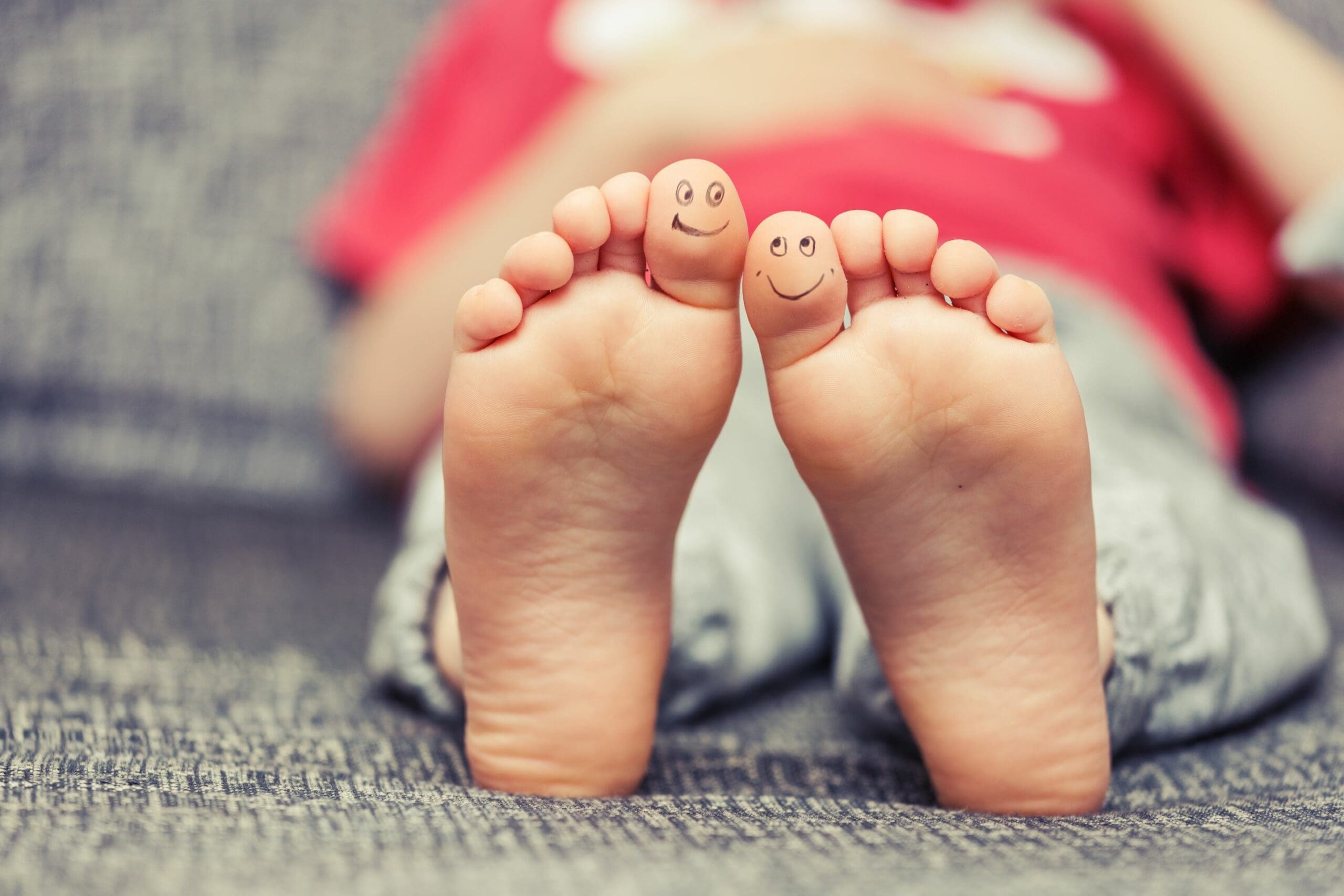Video transcript
Welcome to The Art of Patients, I’m Dr Golly and today we’re talking in-toeing, when the feet turn inwards when walking. It is an extremely common finding in children, so it’s useful to know when to relax and wait for your child to grow out of it, and when to have them seen by a specialist.
If left untreated, in-toeing can cause problems with walking and running, causing those affected to trip over more frequently, as well as appear quite clumsy when walking. In-toeing is commonly called pigeon-toe and today we’ll look at the most common causes. Let’s look at the whiteboard and explore normal, lower-limb development (turns with marker).
The leg is made of three parts: from the thigh, to the calf and then the foot – physiological – or normal – twisting can occur at any of these points. The first is metatarsus adductus where just the foot is turned inwards in a C-shape. It’s the most common cause of in-toeing under 1 year of age and is usually due to the baby’s position in the womb. Those that can be moved into the correct position with relative ease, will usually resolve by 2 years of age, without any intervention at all. The second cause is internal tibial torsion – where the twist occurs in the lower leg. It’s the most common cause between 1 and 3 years and becomes obvious as children begin walking.
Internal tibial torsion will almost always resolve by itself, by 8 years of age. Children with this will often appear bow-legged but there are no exercises, braces or shoes that are needed.
With any cause of in-toeing, it’s important to have your child checked by their GP or paediatrician, if the in-toeing affects (1) one leg only, (2) if it is severe and not improving with time, (3) if it causes tripping over in a school-aged child, or (4) if the feet are stiff and not improving with time.
It’s also wise to have your doctor check your child’s bone health, especially if they have broken bones before or have minimal exposure to sunlight and are at risk of low vitamin D – this can lead to weak bones, that can bend under pressure, or fracture more easily.
The third, common cause of in-toeing is internal femoral torsion – where the twist occurs higher up in the thigh bone. This is also called increased femoral anteversion and is twice as common in girls than boys. Children with this condition usually correct spontaneously by 10 years of age and have a tendency to sit with their legs in a characteristic W-shape – it is wise to discourage this.
There are some very rare causes of in-toeing, including hip dysplasia, clubfoot and cerebral palsy, but your child’s doctor will examine and test for these if necessary. So for metatarsus adductus, internal tibial torsion and internal femoral torsion, the most important – and usually only – treatment required is some reassurance, but when it doubt, consult your child’s GP or paediatrician.
You’ve been watching another episode of The Art of Patients. I’m Dr Golly, I’ll see you next time.


